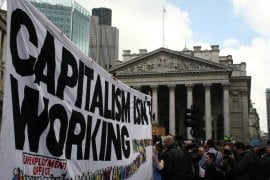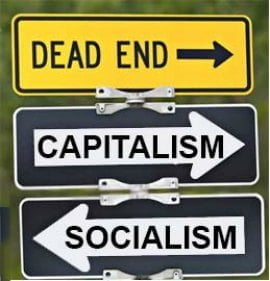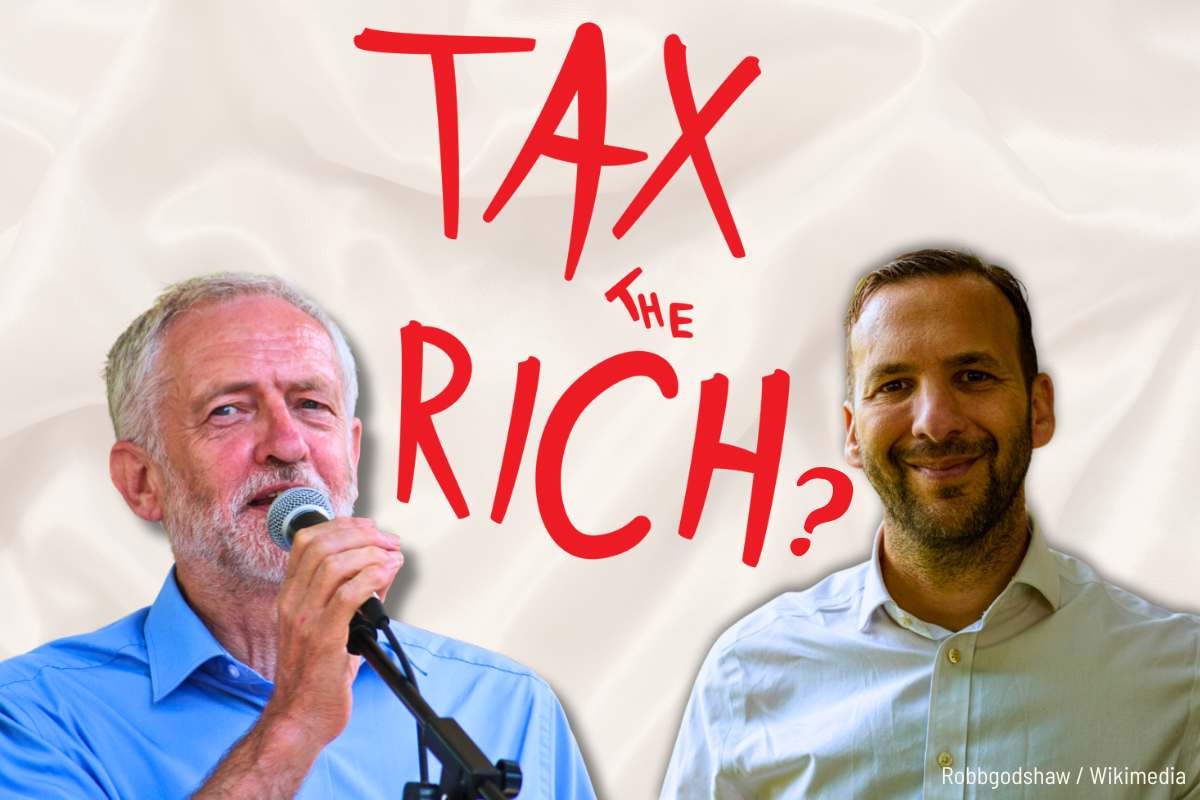The International Monetary Fund has been forced, not only to repeatedly downgrade its growth forecasts, but to now predict a fall in World GDP in dollar terms, the first since 2009. This is a reflection of the crisis-ridden world we are in.
The International Monetary Fund has been forced, not only to repeatedly downgrade its growth forecasts, but to now predict a fall in World GDP in dollar terms, the first since 2009. This is a reflection of the crisis-ridden world we are in.
The IMF economists have been repeatedly forced to eat their words as the world economy, supposedly in its seventh year of “recovery”, has leaned from one crisis to another. The world slump of 2008-9 was a defining moment. It ushered in a protracted crisis, described by Lawrence Summers, the former US Treasury Secretary, as “secular stagnation”.
An organic crisis
Marxists have described this development as an organic crisis of the capitalist system. The productive forces, namely industry, technique and science, have outgrown the nation state and private ownership of the means of production. Capitalism has now reached its limits. It has too much capacity, too much industry, too much technology on a capitalist basis. Everything is “excess” to the needs of the market. This explains the current crisis. Now two of the leading banks of the world are predicting a deep slump next year.
Lawrence Summers has issued a stark warning: “The dangers facing the global economy are more severe than at any time since the bankruptcy of Lehman Brothers in 2008.” We totally agree.
With the Chinese economy – which accounts for 30% of world growth and 16% of world output – slowing down along with the so-called emerging economies, the scene is clearly being set for a new global slump. Chinese exports and imports have fallen over a number of months, with commodity prices falling as a reaction to falling demand. This is symptomatic of a crisis of overproduction, or “excess capacity”, as the capitalist economists like to call it. When China slows, the world slows too. But as it slows, it can teeter over into a slump.
Contagion
In the past, China saved the capitalist system from a deep depression by boosting its economy and providing a market for the western industrialised countries. Chinese growth also gave an impetus to the emerging economies, sucking in commodities and raw materials. The slump of 2008 was mitigated by the huge investments China was making into production. It became an investment-driven economy, contributing enormously to world growth. All that has now changed. China has slowed dramatically to 6.9% officially. But official figures are largely bogus.
The Chinese premier Li Keqiang told the US ambassador that he relied on three things to judge economic growth: electricity consumption, rail freight volumes and bank lending.
On this basis, economists at Fathom have compiled a “China Momentum Indicator” from the three sets of figures. The indicator shows that the actual pace of growth could be as low as 3.1%. Rail freight volumes are sharply down and electricity consumption is virtually flat. China is going the same road as Japan: the road of prolonged stagnation.
The decline in growth in China has hit all those who heavily depend on China. South Korea is the most exposed, exporting goods worth 11% of GDP to China in 2013. Malaysia exported 9.8% of its GDP there, and Thailand 6.9%. Australia, whose raw materials have kept the Chinese growth going for years, sold goods to China worth more than 6% of its economy in 2013. This has all now come to an end, with major implications. As with the US, when China sneezes the rest of the world gets a cold.
This year, emerging markets trade fell, with exports falling by 8.9% in June and 13.5% in July. Brazil’s GDP in dollar terms is set to contract in 2015 by 19.1%. Russia is set to fall by 36%, according to figures from the IMF.
“Commodity-exporting and debt-burdened emerging economies will now have to retrench, just as crisis-hit Eurozone countries had to a few years ago”, explains Martin Wolf in the Financial Times. This retrenchment will simply add to the growing downward spiral.
The US economy in the second quarter of 2015 grew by 3.9%, but most of this was due to the buildup of inventories (unsold stocks). The growth in the third quarter reached 1.5%, which is less than the 1.7% most economist had predicted and a fall of over 60% compared to the previous quarter. Growth is slowing in the USA and has already slowed in Japan and the EU. The US has bragged about unemployment falling to a 5% rate. But if the workforce was the same size as it was in 2008, unemployment would be over 10%.
“Managed Depression”
All the contradictions are piling up to produce a serious downturn. “The risk is that the global economy will fall into a trap not unlike the one Japan has been in for 25 years where growth stagnates but little can be done to fix it”, states martin Wolf.
Wolf describes the situation as a “managed Depression”. There exists “a prolonged slump in aggregate demand”, and there is no response possible. This reveals the complete impotence of the strategists of capital.
While world stock markets have been increasingly volatile, they have tended to keep rising, especially in the US. This rise in stocks shows just how far stock markets are from the real economy, which is heading south.
US banks have repeatedly announced bleak news as earnings continue to fall. Goldman Sachs profits fell by 40%. JPMorgan Chase reported a 23% drop in revenues.
However, debts are still rising everywhere. Private sector debt, in particular remains very high. In the US it reached 160% of GDP in 2007 and nearly 200% in Britain, but China has already surpassed these levels. Europe faces long, protracted slow growth and deflation. According to Wolfgang Munchau, it is under a “constant threat of insolvency and political insurrection.” (FT, 15/6/14) The attempt to reduce debts in this environment will be “harder and bloodier” than we have seen.
In 2016, the EU strictures will come in force to speed up the fiscal consolidation (austerity). “The bottom line is that the total post-crisis adjustment will be much more brutal than it was in Japan 20 years ago”, stated Munchau. “In such an environment I would expect the political backlash to get more serious… Even if deleveraging could work – which is not clear – it may not work politically… By reducing political instability, they will end up increasing financial instability.”
Defying gravity…for now
Businesses are clearly struggling. US exports and imports have been falling, as demand weakens everywhere. This has meant a fall in earnings. Fewer sales mean fewer revenues. Incredibly, company profits, instead of falling have actually risen, mainly due to cost cutting and cheap credit. In fact a scissors has opened up between earnings and profits, which cannot last for long. It is like the cartoon character walking over a cliff but continuing to defy gravity. They have cut their way to a profit. But this has its limits. Eventually, profits will fall.
This scenario is certainly not the road to a vibrant economy. But in the short term, it is the way to artificially create a vibrant stock market!
The market is out of sync with the real crisis affecting the economy. It is founded on a situation where company revenues are falling, where the numbers for companies are falling, but the market is rising. This will sooner or later lead to a stock market crash (“correction”).
The real economy is heading downwards, as demand and investment fall. “In the period up to 2007, needed global demand was generated in large part by expansions in credit and house building, particularly in the US and Spain”, writes Martin Wolf. “This engine run out of fuel in the western crises of 2007-9 and Eurozone ones 2010-2013. This created our world of zero short-term nominal interest rates and zero long-term real ones. Demand and potential and actual output have remained subdued in these economies ever since.”
This has been described as “zombie” capitalism, where historically low interest rates have kept struggling firms afloat. In the capitalist system, the role of a slump is to cleanse the economy, through “creative destruction”. But huge amounts of excess capacity remains, weighing down the profit system.
“In all, the world’s glut of potential supply seems sure to worsen. This is why disinflationary pressures are so likely to rise worldwide” Martin Wolf (FT, 13/10/15). In other words, overproduction everywhere. We have low growth, low inflation and zero interest rates, which add up to secular stagnation and depression.
As Marx explained, “It is thus the nature of capitalist production to produce without regard to the limits of the market… The market expands more slowly than production… there comes a moment at which the market manifests itself as too narrow for production. This occurs at the end of the cycle. But it merely means the market is glutted. Overproduction is manifest.” (Marx, Theories of Surplus Value, vol.2, pp. 522 and 524)
The system has stalled
 The capitalists have no faith in their system. Instead of investing, they sit on cash piles of trillions of dollars. Why invest when there is no demand? Alternatively, they stash their money into safe government bonds, a safe haven in a storm.
The capitalists have no faith in their system. Instead of investing, they sit on cash piles of trillions of dollars. Why invest when there is no demand? Alternatively, they stash their money into safe government bonds, a safe haven in a storm.
In the past, world trade was the motive force driving global production. This has now run out of steam.
Before 2008, the volume of world trade grew by 6% annually, according to the WTO. In the past 3 years, it has slowed to 2.4%. Now, in the first 6 months of 2015, it is suffering its worst performance since 2009. China is “rebalancing” to get away from its dependence on massive investment and exports. Higher wages in China is causing countries, like Japan and the US to “re-shore” their supply chains.
2015 marks the fifth consecutive year that average growth in the emerging economies has declined, dragging down world growth in the process.
Globalisation is slowing. World trade is stalling. The volume of world trade fell in May (2015) by 1.2%. It has fallen for 4 out of the first 5 months of 2015. The Doha Round of talks has been going on for 14 years and have stalled. Now we see the rise of regional blocs. The newest is TPP, which could cover 40% of the world economy, but has many loose ends and needs to be ratified by a host of countries, including the US. But nothing is certain. Obama may be out of office before anything is ratified, especially with a hostile congress.
Global investment – the key to any boom – is continuing to fall. For several years, the emerging economies invested heavily, but this has now slowed down, given the excess capacity affecting their economies. There is slower trade growth as capital goods are more trade intensive. Lower investment also means lower productivity of labour. Productivity in the US is growing at a disappointing 0.6% per year. This also means lower living standards. The IMF is warning that living standards will grow more slowly than before 2008, a grim reality facing working people.
The death agony of capitalism
They all agree that the 2008 crisis has permanently lowered the rate of growth. It has ushered in a new epoch of capitalist crisis. That is the meaning of secular stagnation. Potential growth in the advanced capitalist countries is forecast to grow by 1.6% a year between now and 2020, much lower than the potential output of 2.25% before the slump of 2008.
The IMF reports are full of gloom. They have downgraded their forecasts repeatedly, expecting this year the slowest growth of the world economy since 2008. This year, exports and imports into the US have fallen, reflecting the general weakness of the world economy. This has affected the US labour market, which has also slowed. “Since July, the IMF has scattered minus signs all over its forecasts”, states the Financial Times.
This reflects the real plight of world capitalism at the present time. These doldrums will give way to a new world slump. However, this time the ruling class has run out of ammunition to prevent a slump turning into a new depression. As long as capitalism lasts, crisis and austerity are on the order of the day. The time has come to put an end to this nightmare.






